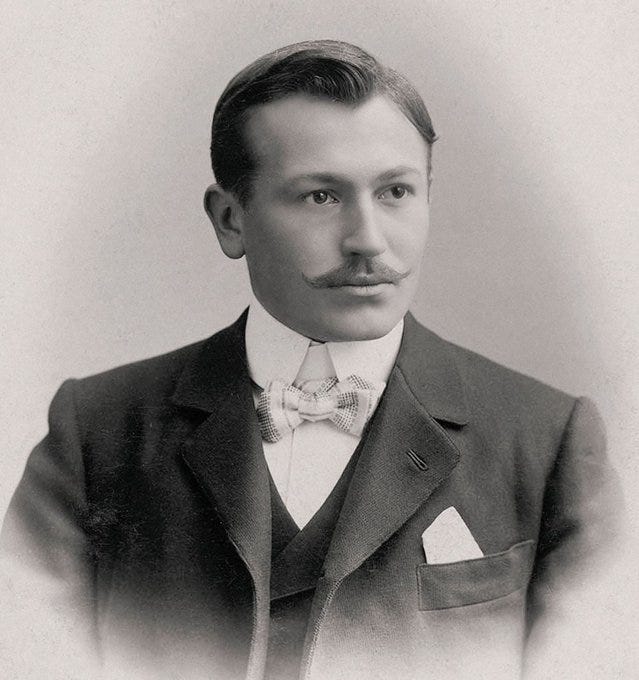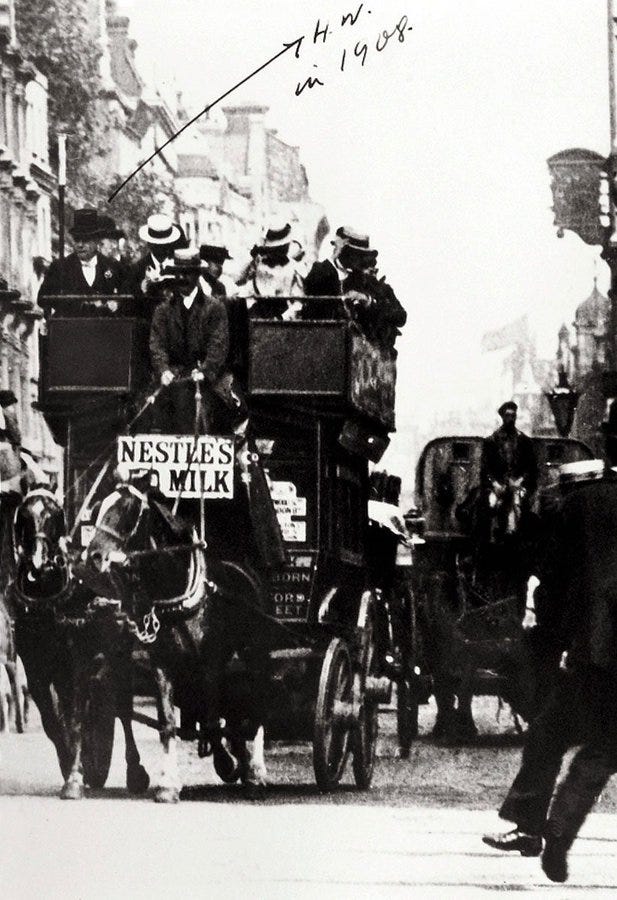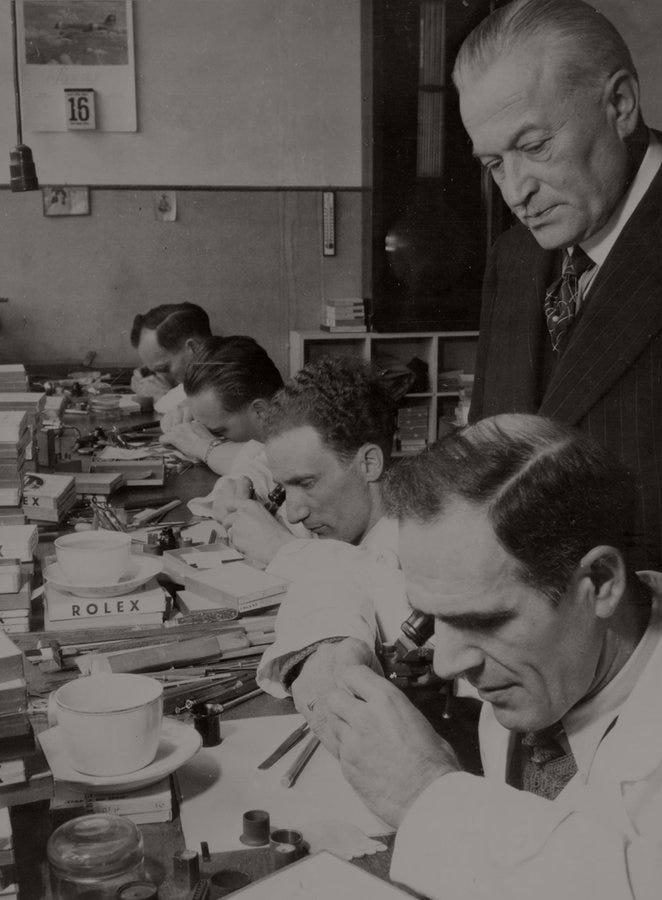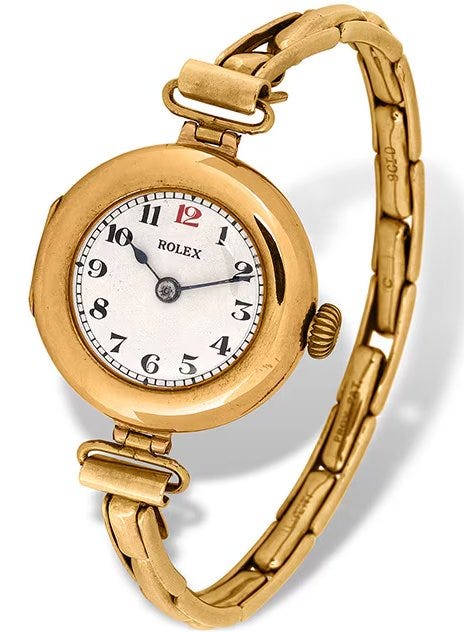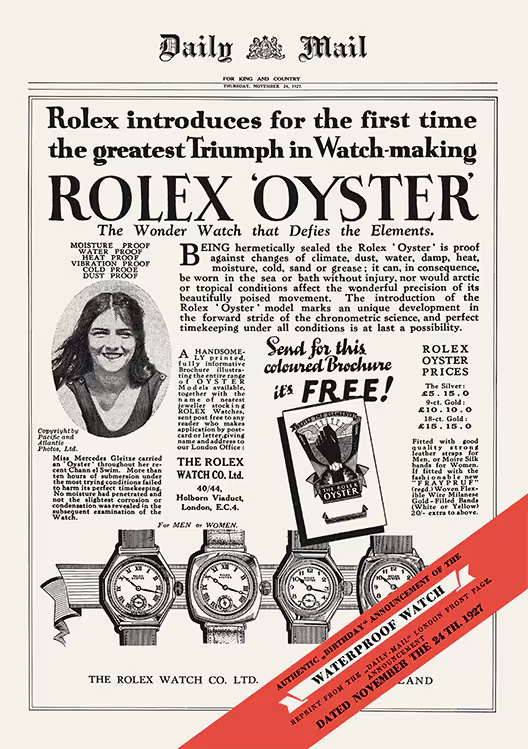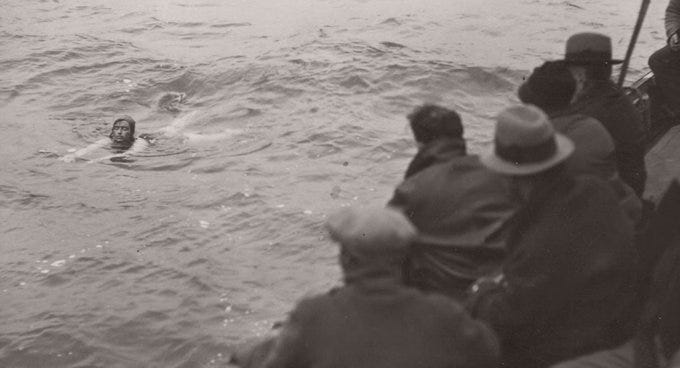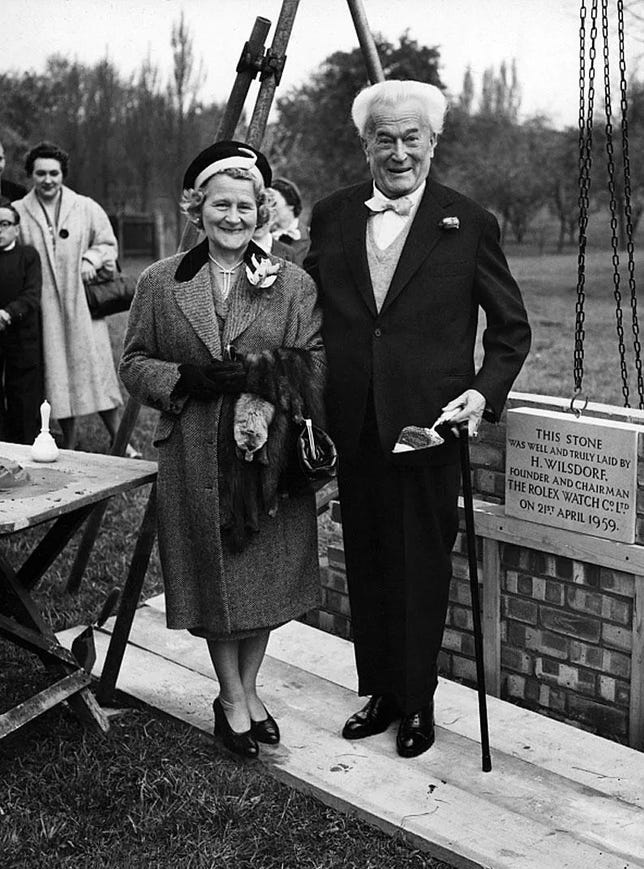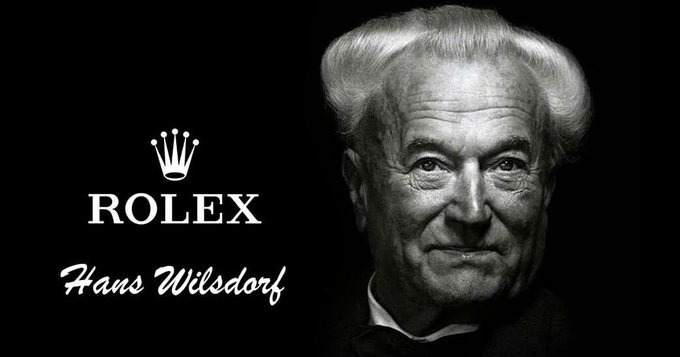The Man Who Changed Time Forever - The Birth Of Rolex
Discover how a Bavarian orphan defied the odds to revolutionize watchmaking and create one of the most iconic brands in history.
Hans Wilsdorf was born in Bavaria in 1881. During this era, time was carried in the form of pocket watches. Wristwatches were considered impractical and fragile, reserved primarily as decorative jewellery for women. Despite this, Hans recognized the potential of a wristwatch as a durable and precise instrument for the modern age.
By 1905, at just 24 years old, Hans was working with a small Swiss manufacturer in Bienne, known for producing compact, reliable watch movements. He moved to London and founded his own company, assembling these movements into watch cases. He had one goal: to create a new kind of timepiece—modern, precise, and practical.
The company needed a name that would resonate across languages and stand out. In 1908, while riding on a horse-drawn omnibus through London’s Cheapside district, inspiration struck. Hans later recounted how “a genie whispered ‘Rolex’ in my ear.” Within days, he registered the trademark. The name was short, memorable, and looked elegant on a watch dial.
Hans’s ambitions extended far beyond branding. In 1910, just two years after launching the Rolex name, he achieved a world first: a Rolex wristwatch received the Swiss Certificate of Chronometric Precision, granted by the Official Watch Rating Centre in Bienne. This milestone was unprecedented.
Four years later, in 1914, the Kew Observatory in London awarded a Rolex wristwatch its Class A precision certificate. This distinction had, until then, been reserved exclusively for marine chronometers—massive instruments designed for navigation. Hans had proven the wristwatch could match the accuracy of the most reliable timepieces of the era.
Hans understood that precision alone wasn’t enough. A watch had to endure the challenges of daily life. In 1919 its founder set up permanent operations in Geneva and in 1926, Rolex introduced the Oyster, the world’s first waterproof wristwatch. The watch was hermetically sealed, as resilient as its namesake. This innovation marked a turning point in watchmaking.
To prove the durability of the Oyster, Hans orchestrated a bold demonstration. In 1927, Mercedes Gleitze, a young British swimmer, wore the Oyster as she swam the English Channel. After over 10 hours in freezing waters, the watch emerged unscathed, still ticking perfectly. Rolex had delivered on its promise of precision and reliability. “Like an oyster, it can remain an unlimited time under water without detriment to its parts.” - Hans Wilsdorf
Rolex continued to innovate. In 1931, Hans introduced the Perpetual rotor, a self-winding mechanism powered by the movement of the wrist. This invention laid the foundation for the automatic watches we know today. It was an advancement that solidified Rolex as a leader in horology. “What has been achieved in the past serves to strengthen my faith in the future and my conviction that the fame of Rolex will prove worthy of the position it has won in the world.” - Hans Wilsdorf
By the 1940s, Rolex had become synonymous with precision, durability, and innovation. In 1944, however, Hans faced personal tragedy when his wife, Florence, passed away suddenly. He had achieved great success, but the person who had shared the journey with him had gone. Orphaned at 12, at 63 he was now a widower with no descendants. With no children and his life partner gone, Hans began to think about the legacy of his company and its impact on future generations.
In 1945, to celebrate Rolex’s 40th anniversary, Hans introduced the Datejust, the first self-winding wristwatch to display the date in a window on the dial. It became an enduring symbol of prestige and innovation. Around this time, Hans began transitioning Rolex into a foundation to ensure its independence and continued pursuit of excellence.
Hans Wilsdorf passed away in 1960, leaving behind a company built on his ideals of precision, durability, and timeless elegance. His greatest legacy was not just the watches but the philosophy he instilled in Rolex: “Produce nothing but beautiful work.”
Today, Rolex remains a symbol of innovation and achievement. From its groundbreaking Oyster case to its role in countless explorations, the company continues to embody Hans Wilsdorf’s vision. Rolex is more than a watch—it is a perpetual legacy, built to last and inspire generations to come.


